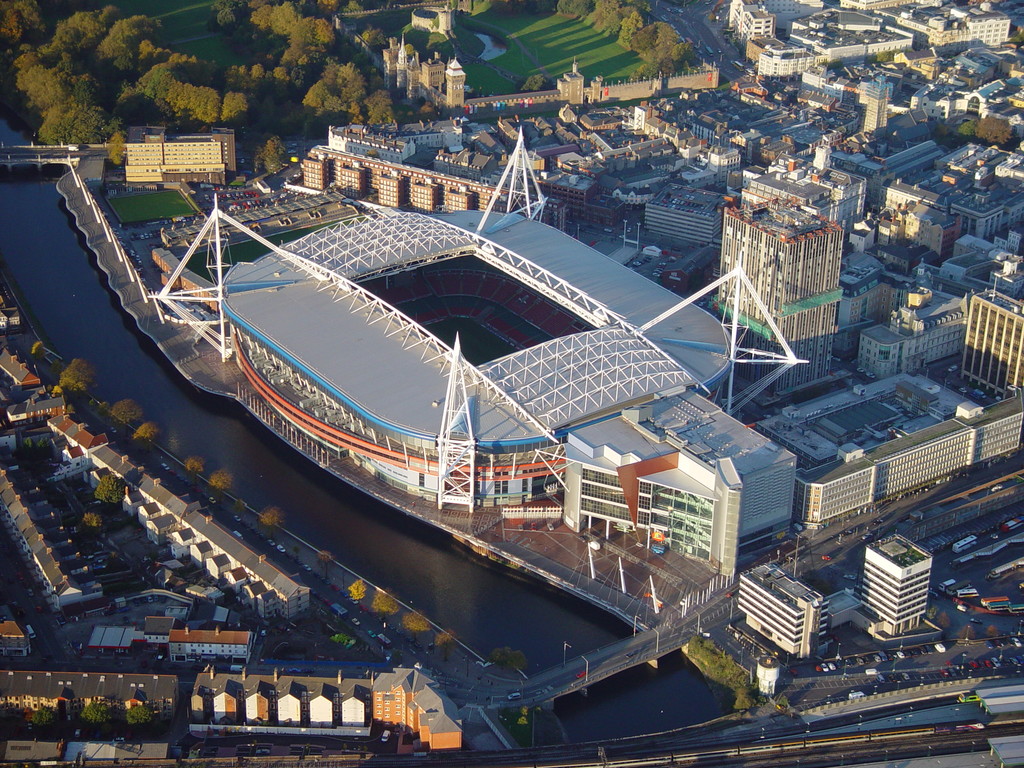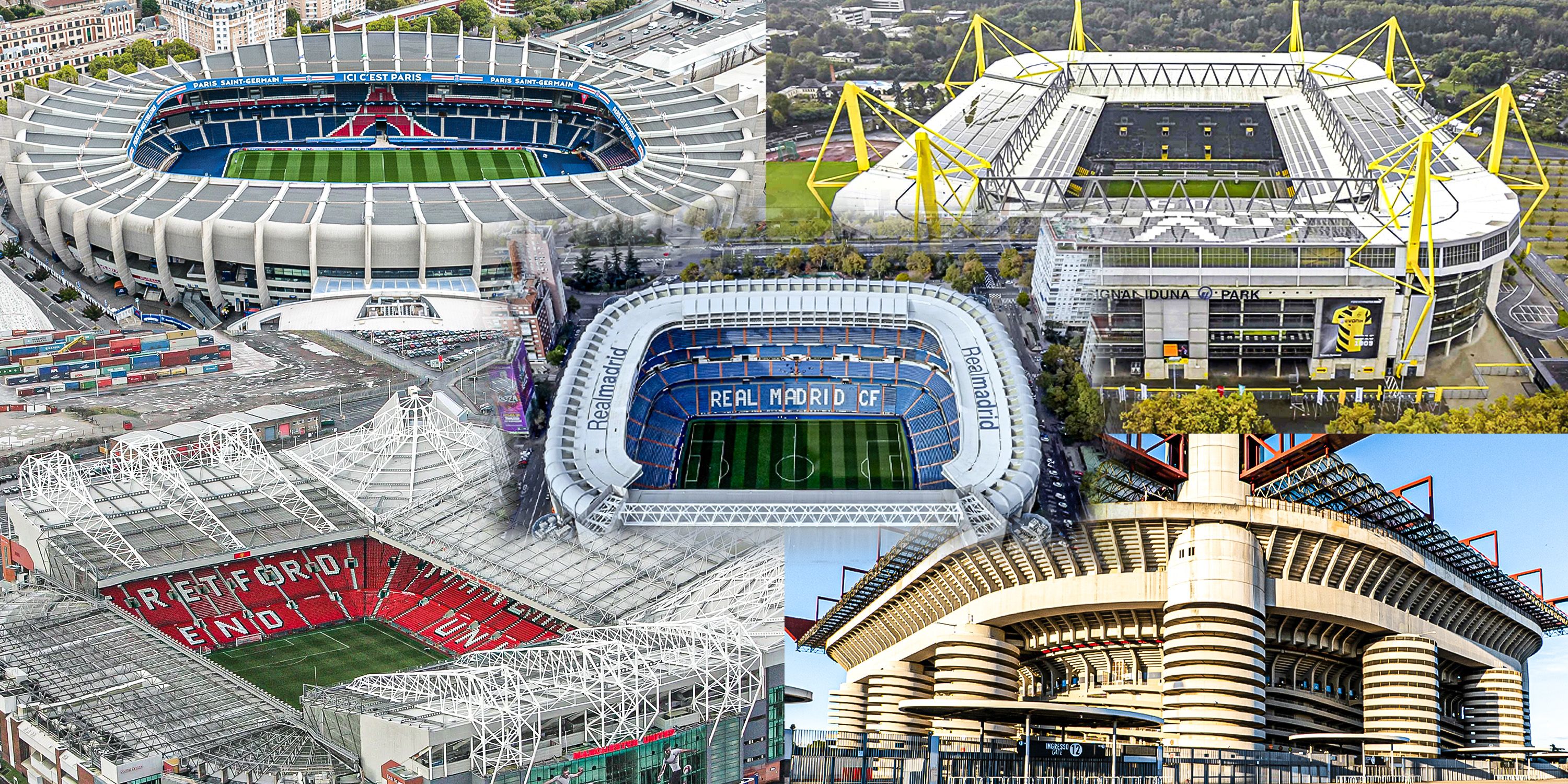
Europe’s Grand Arenas: A Journey Through Football’s Most Iconic Stadiums
Europe, the undisputed heartland of football, is home to a collection of stadiums that transcend mere sporting venues. They are cathedrals of passion, crucibles of history, and architectural marvels that stand as testaments to the beautiful game. From the hallowed grounds where legends were forged to ultra-modern coliseums pushing the boundaries of technology, these arenas offer an unparalleled experience for fans and players alike.
What makes a stadium truly "best"? It’s a complex alchemy of several factors: immense capacity, electrifying atmosphere, rich history, cutting-edge facilities, and often, a unique architectural identity. This article embarks on a journey to explore some of Europe’s most iconic and revered stadiums, delving into what makes each one a pinnacle of the sport.
The Titans of Tradition and Grandeur
1. Camp Nou (Barcelona, Spain)
Capacity: 99,354
Home to FC Barcelona, Camp Nou is not just the largest stadium in Europe; it’s a monumental symbol of Catalan identity and footballing artistry. Opened in 1957, its sheer scale is breathtaking, allowing nearly 100,000 voices to erupt in unison. From the mesmerising "Mes Que Un Club" mosaic to the roar of "Barça! Barça! Barça!" as Lionel Messi once weaved his magic, Camp Nou has been the stage for countless historic moments, including two Champions League finals. While its age is showing, extensive renovation plans are underway to transform it into the Espai Barça, an even more modern and integrated sports complex, ensuring its legacy for generations to come. The experience of being inside Camp Nou, even when not at full capacity, is humbling, a testament to its grandeur and the club’s global reach.
2. Santiago Bernabéu (Madrid, Spain)
Capacity: 81,044
The illustrious home of Real Madrid, the Santiago Bernabéu, is synonymous with footballing royalty. Named after the legendary club president, it has hosted four Champions League finals, a European Championship final, and the 1982 FIFA World Cup final. Its imposing structure, combined with the club’s "Galácticos" era, has cemented its status as one of the world’s most feared and revered venues. Currently undergoing a spectacular multi-billion-euro renovation, the Bernabéu is being transformed into a futuristic masterpiece. The plans include a retractable roof, a retractable pitch (allowing the stadium to host concerts and other events without damaging the turf), and a striking new exterior, blending its rich history with state-of-the-art technology to offer an even more immersive and versatile experience.
3. Wembley Stadium (London, England)
Capacity: 90,000
Often referred to as the "Home of Football," the new Wembley Stadium, opened in 2007, replaced the iconic twin towers with a magnificent 133-meter high arch that lights up the London skyline. It’s not just the home of the England national team and the FA Cup Final; it’s a global venue, hosting NFL games, major concerts, and even the 2012 Olympic Games football final. The stadium’s design focuses on an optimal viewing experience, with no restricted views and excellent acoustics that amplify the roar of 90,000 fans. While it may lack the intimate club atmosphere of some other venues, its historical significance and modern grandeur make it an indispensable part of European football’s elite.
4. Old Trafford (Manchester, England)
Capacity: 74,310
Known affectionately as the "Theatre of Dreams," Old Trafford is the legendary home of Manchester United. Since 1910, it has witnessed the club’s unparalleled success, tragic moments like the Munich Air Disaster, and the rise of countless footballing legends. The stadium exudes history from every brick, with its famous Sir Alex Ferguson Stand and the poignant Munich Tunnel. While it may not boast the latest in architectural flair, its rich tapestry of memories and the sheer weight of its legacy provide an atmosphere unlike any other. Stepping into Old Trafford is like entering a living museum of football, where the echoes of past glories resonate with every match.
5. Anfield (Liverpool, England)
Capacity: 57,000
Anfield, the spiritual home of Liverpool FC, is renowned worldwide for its spine-tingling atmosphere, particularly on European nights. The famous "Kop" stand, a single-tier terrace (now seated), is the heartbeat of the stadium, where the collective voice of thousands of fans singing "You’ll Never Walk Alone" creates an emotional crescendo that can genuinely intimidate opposition teams. Opened in 1884, Anfield has a deep-rooted history, witnessing 19 league titles and 6 European Cups. Recent expansions have increased its capacity while carefully preserving its unique character and the intimate, intense atmosphere that makes it truly special. It’s a place where tradition and raw passion converge.
Modern Marvels and Atmospheric Powerhouses
6. Allianz Arena (Munich, Germany)
Capacity: 75,000
Home to Bayern Munich, the Allianz Arena is an architectural masterpiece, instantly recognisable by its distinctive illuminated exterior that can change colours to reflect the home team (red for Bayern, white for the German national team). Opened in 2005, it set new standards for modern stadium design, focusing on fan comfort, excellent sightlines, and environmental sustainability. Its innovative design allows for a vibrant atmosphere despite its large capacity, making it a fortress for the Bavarian giants. It perfectly encapsulates German efficiency and design prowess, providing a world-class experience from the moment you approach its glowing facade.
7. Signal Iduna Park (Dortmund, Germany)
Capacity: 81,365
While the Allianz Arena is a beacon of modernity, Signal Iduna Park (Westfalenstadion) is a monument to raw, unadulterated fan passion. Home to Borussia Dortmund, it boasts the largest standing terrace in Europe, the "Südtribüne" or "Yellow Wall," which alone holds 25,000 fervent fans. The sheer spectacle of the Yellow Wall, a sea of black and yellow, bouncing and chanting in unison, creates an unparalleled atmosphere that can be genuinely deafening. The stadium’s steep stands ensure that even seated fans feel close to the action, making every match a visceral experience. It’s a testament to the power of collective support and a unique gem in European football.
8. Tottenham Hotspur Stadium (London, England)
Capacity: 62,850
Opened in 2019, the Tottenham Hotspur Stadium is arguably the most technologically advanced and fan-centric stadium in Europe. It’s a multi-purpose venue designed from the ground up to offer a premium experience. Highlights include the "Skywalk" on the roof, a retractable pitch (allowing an NFL-standard artificial pitch underneath for American football games), and the "South Stand," a single-tier stand designed to mimic the atmosphere of Dortmund’s Yellow Wall, creating a formidable wall of sound. Its innovative design, sustainable features, and commitment to enhancing the fan experience set a new benchmark for future stadium developments.
9. San Siro / Giuseppe Meazza (Milan, Italy)
Capacity: 75,923
The iconic San Siro, officially known as the Stadio Giuseppe Meazza, is a legendary stadium with a unique identity, shared by AC Milan and Inter Milan. Its distinctive spiral towers and tiered structure make it instantly recognisable. Opened in 1926, it has hosted World Cup matches, European Cup finals, and countless Derby della Madonnina clashes, creating a rich tapestry of Italian football history. While its age is evident and plans for new stadiums are afoot for both clubs, the San Siro retains a powerful, almost gladiatorial atmosphere, especially during fiercely contested derbies. Its raw, imposing presence is a reminder of football’s golden age.
Other Noteworthy Cathedrals of the Game
Beyond these titans, Europe boasts a plethora of other incredible stadiums, each with its unique charm and significance:
- Estádio da Luz (Lisbon, Portugal): "The Cathedral of Light," home to Benfica, known for its passionate fans and the pre-match flight of an eagle over the pitch.
- Johan Cruyff Arena (Amsterdam, Netherlands): Home to Ajax, this modern stadium features a retractable roof and is a pioneer in multi-functional event hosting, named after the legendary Dutch maestro.
- Celtic Park (Glasgow, Scotland): "Paradise," as it’s known to Celtic fans, generates an electrifying atmosphere, particularly on Champions League nights, driven by the fervent support of the "Bhoys."
- Stade de France (Saint-Denis, France): The national stadium of France, a symbol of the 1998 World Cup triumph, and a host of major international rugby and athletic events.
- Wanda Metropolitano (Madrid, Spain): Atletico Madrid’s sleek, modern home, which provides an excellent viewing experience and has cultivated a passionate atmosphere since its opening in 2017.
- Puskás Aréna (Budapest, Hungary): A stunning new stadium opened in 2019, a testament to modern European design and capable of hosting major international tournaments.
- De Kuip (Rotterdam, Netherlands): Feyenoord’s historic home, renowned for its steep stands and intense atmosphere, often described as one of the best footballing experiences in the Netherlands.
- Stadio Olimpico (Rome, Italy): Shared by AS Roma and Lazio, this historic venue has witnessed iconic moments and still provides a dramatic backdrop for the fiery Roman derby.
The Future of Stadiums
The evolution of football stadiums is an ongoing process. The trend is towards multi-purpose venues that are not only sustainable and technologically advanced but also deeply integrated into their communities. Expect to see more stadiums with retractable pitches, smart technologies for fan engagement (e.g., personalised content, seamless ordering), and designs that prioritise energy efficiency and reduced environmental impact. The focus will increasingly be on creating a holistic "matchday experience" that extends beyond the 90 minutes of play.
Conclusion
Europe’s best stadiums are more than just places where football is played; they are living monuments to the sport’s rich history, its passionate present, and its exciting future. They are places where dreams are forged, heroes are made, and collective emotions reach a fever pitch. Whether you seek the echoes of history at Old Trafford, the raw intensity of the Yellow Wall, or the futuristic marvel of the Tottenham Hotspur Stadium, each arena offers a unique window into the soul of European football. Visiting them is not just watching a game; it’s experiencing a culture, feeling the pulse of a city, and becoming a part of the beautiful game’s enduring legacy.



